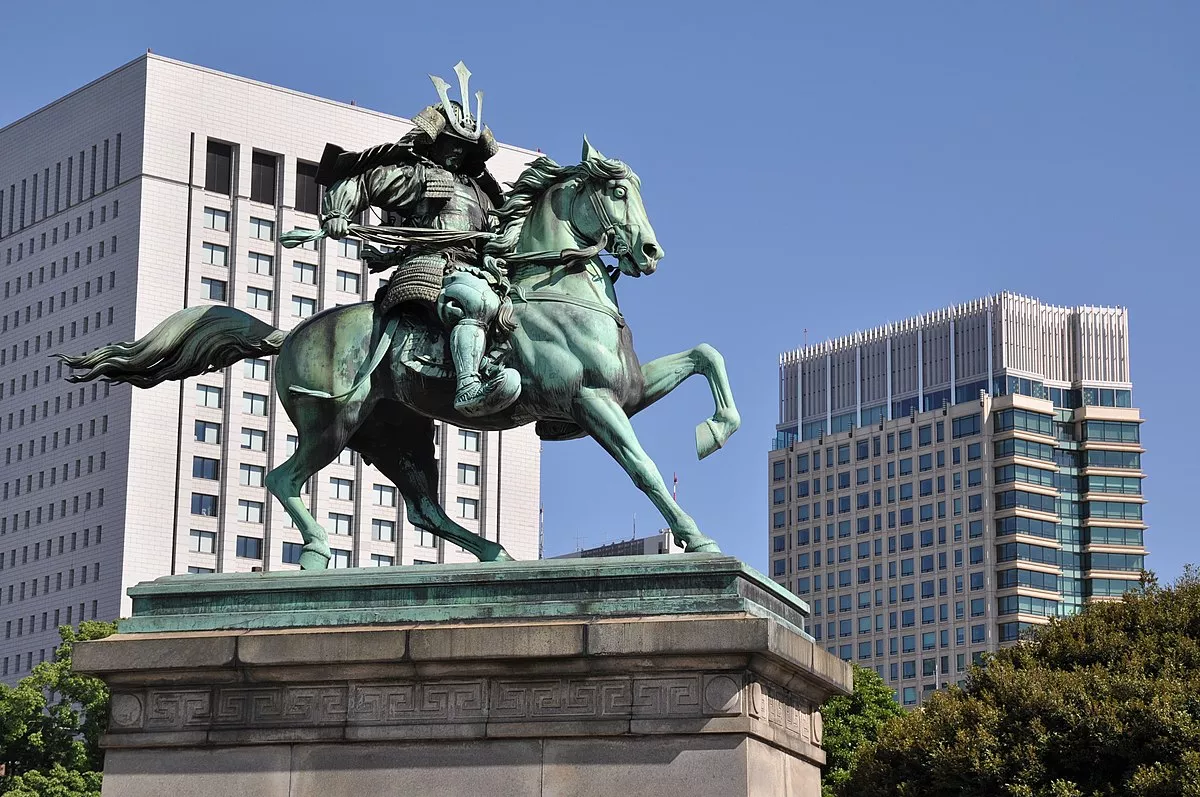 1.
1. Kusunoki Masashige was a Japanese military commander and samurai of the Kamakura period remembered as the ideal loyal samurai.

 1.
1. Kusunoki Masashige was a Japanese military commander and samurai of the Kamakura period remembered as the ideal loyal samurai.
Kusunoki Masashige was a leading figure of the Kenmu Restoration in 1333, and remained loyal to the unpopular Emperor Go-Daigo after Ashikaga Takauji began to reverse the restoration in the Nanboku-cho wars three years later.
Kusunoki Masashige attacked Takauji in Settsu at the command of the Emperor, an act of obedience sure to result in defeat, and died at the Battle of Minatogawa in 1336.
Kusunoki Masashige was posthumously awarded the highest court rank in Japan, Senior First Rank, by the Meiji government in 1880, over 500 years after his death.
Kusunoki Masashige was highly evaluated as "Japan's three loyal retainers" along with Fujifusa Madenokoji and Taira no Shigemori.
Kusunoki Masashige's origin has not been validated and it was merely six years between the start of his military campaign in 1331 and his demise in 1336.
Kusunoki Masashige is believed to have been born in 1294 in Kawachi Province as a "well-to-do member of the rural gentry" and claimed descent from Tachibana Moroe, "a great nobleman" of the eighth century.
Kusunoki Masashige's birthplace has been linked to the village of Chihaya-Akasaka where a small monument called the "Nanko Tanjochi" can be found.
Kusunoki Masashige was a "scholar and a devout Buddhist" with much of his early education taking place at Kanshin-ji Temple in Kawachinagano, in present-day southern Osaka Prefecture.
Later in his life, Kusunoki Masashige would arrange for considerable renovations to the temple.
Takauji was able to take Kyoto, but only temporarily before Nitta Yoshisada and Kusunoki Masashige were able to dislodge Takauji, forcing him to flee to the west.
Kusunoki Masashige suggested to the Emperor that they take refuge on sacred Mount Hiei and allow Takauji to take Kyoto, only to swoop down from the mountain, and with the help of the monks of Mount Hiei, trap Takauji in the city and destroy him.
Go-Daigo was unwilling to leave the capital however, and insisted that Kusunoki Masashige meet Takauji's superior forces in the field in a pitched battle.
Kusunoki Masashige is thought to have built a number of smaller castles throughout southern Osaka, particularly within what is the city of Kawachinagano.
Kusunoki Masashige had a tachi called Little Dragon Kagemitsu.
Kusunoki Masashige later became a patron saint of sorts to World War II kamikaze, who saw themselves as his spiritual heirs in sacrificing their lives for the Emperor.